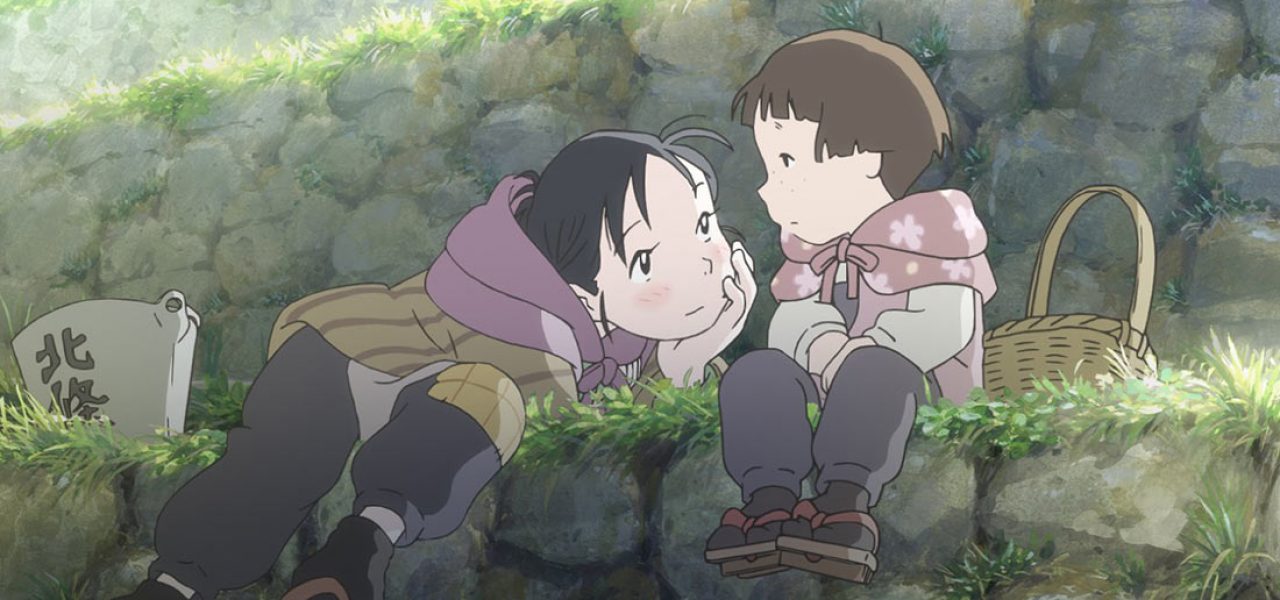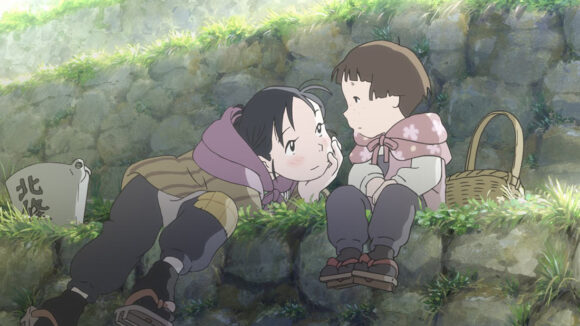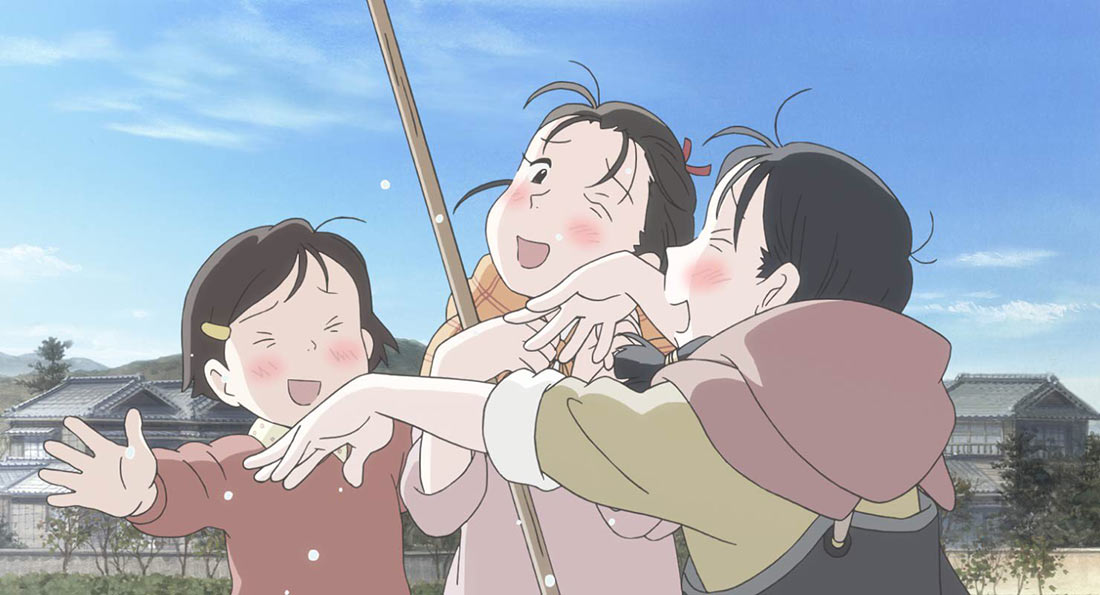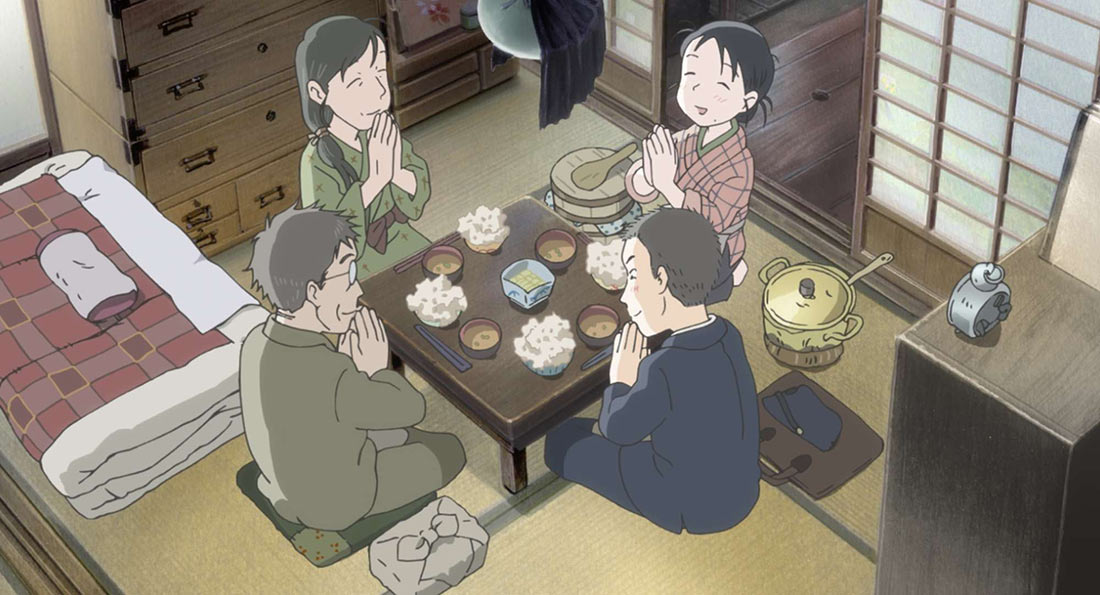

Get Down to the Details: Sunao Katabuchi On ‘In This Corner of the World’
Details matter in animation, which is likely why writer and director Sunao Katabuchi’s patient Hiroshima epic, In This Corner of the World, has accrued dozens of awards (including the Japan Academy Prize) and bountiful praise since making the jump from manga to anime last year in Japan.
An assistant director on Hayao Miyazaki’s 1989 masterpiece, Kiki’s Delivery Service, Katabuchi believed that the details of its young witch’s interiority were as essential as those of the film’s wondrously hand-drawn exteriors. The same governing philosophy applies to In This Corner of the World, bowing stateside today. Katabuchi spends much of his meditative film illustrating the psychology of its main character, a daydreaming artist named Suzu, as she moves through towns and lives bombed sometimes beyond recognition during World War II.
Using the experimental pages of Fumiyo Kouno’s acclaimed manga, Katabuchi’s film also painstakingly researched and represented the historical particulars of that period, which he admitted can teleport his adaptation into documentary territory.
And yet the results are, suitably, fantastical.

“At this point, when Japanese people think about that era, it’s a far-off point in history,” he told Cartoon Brew. “Most have obviously never experienced that time, but through this film they were able to time travel.”
While other anime standouts have engaged the horrors of World War II, most notably Isao Takahata’s Grave of the Fireflies, Katabuchi’s simulation of Japanese life during wartime navigates the turbulent waters of arranged marriage, resource scarcity, domestic strife, international war, propaganda, and art with a grace and stillness hard to find in American theaters.
We spoke by phone with Katabuchi through his amiable translator, Junko Goda.
Cartoon Brew: Congratulations on your jury award at Annecy. Why do you think viewers were drawn into In This Corner of the World?
Sunao Katabuchi: I can’t say exactly why, but I think the film is something people haven’t seen in anime, in terms of its details. It’s almost at the level of a documentary. The details that went into it are just as good as live-action film, and yet our film went beyond what a live-action film can do. We actually did the research and recreated Hiroshima before the bombing, which I would say is something that live-action film cannot do. So it could be considered a simulation of that world. We recreated a reality that truly existed, how Suzu and her family and friends existed within that world, so it reached beyond the average anime and manga.
The characters have a depth to their souls. Some audience members told me that they didn’t feel like they were watching anime, but also didn’t feel like they were watching a movie. They felt part of Suzu’s journey, like they were interacting with the people within it. I’m quoting the audience members. [laughs] At this point, when Japanese people think about that era, it’s a far-off point in history. Most have obviously never experienced that time, but through this film they were able to time travel.
It’s a testament to Japanese culture that you can make a two-hour, hand-drawn epic about life during wartime, that is historically detailed and patiently rendered, and still capture an audience’s imagination.
Sunao Katabuchi: I actually experienced resistance when I first started out, but the manga’s fan base wanted to see something like this. The manifestation of that was the crowdfunding. [Editor’s note: About 14% of the film’s 250 million yen budget was raised through a crowdfunding campaign.] But even before the crowdfunding, we were already working on storyboards. It really communicated that this isn’t the typical war story that audiences have encountered. So it was an adventure, but the biggest support definitely came from our audience. It would’ve been a shame not to make a movie that they wanted.
It’s also a testament to animation itself, especially hand-drawn, which as you say can achieve documentary-level detail but also an expressivity that adds depth to history. In that way, In This Corner of the World is also about our tragic war on art and ability.
Sunao Katabuchi: From the film’s beginning, we see Suzu’s skill and drawings. Ultimately, when she loses that, we’re sad because she can’t draw anymore. Considering her abilities, and then her loss, I really felt that the film had to be hand-drawn.

Do you feel there is a depreciation of hand-drawn animation, given that much of global production seems pretty sold on digital?
Sunao Katabuchi: I feel that whatever technique you choose should be the best way to tell the story. I always try to feature a component of what human beings can do with their hands somewhere in my projects, as well as what the human imagination is capable of. I actually get a lot of energy from the hand-drawn approach. And of course, in some cases, cgi works for the story, so I don’t think it’s bad or good or anything. I think it’s more about how different techniques and approaches exist in parallel to each other.
There are moving scenes, such as the bombing raids, where you could have been very technical and literal for the sake of realism, but instead chose to be artfully expressive.
Sunao Katabuchi: I believe that anime has the power to express emotions, as well as represent objects in the world. So I wanted to express Suzu’s feelings about what was happening, and I think so did Fumiyo Kouno, the artist who wrote the manga. Her approach was to try out different techniques to seek the potential of her characters, so there’s a lot of variety, even in her words. For example, she uses lipstick in some areas, rather than ink. In others, she draws with her left hand. We used the same approach in those moments; our artists switched to their left hands. What’s interesting about her work is that she was intent on discovering the possibilities of her art. In that way, her manga formed the basis of our anime; we continued exploring the possibilities.
Those are some of the powerful scenes. I liked the one where Suzu’s injured during a bombing, and the screen goes black before expressive lightning brings the viewer back.
Sunao Katabuchi: That’s the point of view of someone who has lost consciousness; into the pitch black come little flashes of light, which are at first very abstract. But as Suzu regains consciousness, objects coming into view become more grounded and realistic. We actually had an audience member who is a psychiatrist tell us that it was a good way to express what it is like to be unconscious.

Other memorable anime, such as Grave of the Fireflies, have explored World War II.
Sunao Katabuchi: I feel that they’re all completely separate. They just happen to cover a major world event, or era, but they all have their own points of view.
Which remain more relevant to you as time passes?
Sunao Katabuchi: That’s a hard one. I feel that the crew on Grave of the Fireflies were probably unable to do as much research. Whereas, we were able to do the research to the fullest extent, in terms of recreating Hiroshima and other places. In Grave of the Fireflies, there is an air raid that burns an entire town to the ground in just one scene. However, our research found that there were lots of fire trucks driving around. So I felt, to faithfully capture the backdrop of war, we had to get down to the details.
I can’t let you go without asking what you learned from Miyazaki, about animation and yourself, during the making of Kiki’s Delivery Service, my family’s favorite film.
Sunao Katabuchi: I was originally lined up to direct that. I asked myself the question: If I was going to make Kiki’s Delivery Service, how would I make it? Basically, we had the background — a girl coming of age, and going on a journey — but capturing the whole psychology of growing up was very important to me. And it turned out that Miyazaki also had the same idea, of exploring that psychological perspective. It confirmed that we had the same thoughts and approach.
In This Corner of the World opens today in Los Angeles, San Francisco, and New York City through Shout Factory and Funimation Films. The film begins nationwide expansion next week. For a full list of theaters, see the Funimation website.

.png)